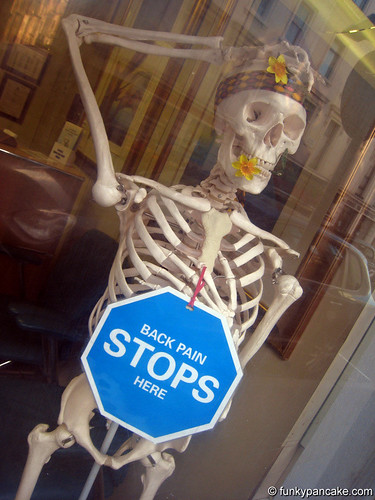
This is a continuation of my previous blog post, Core Training: Back Pain Rehabilitation and Rowing Exercise.
If you don’t feel like reading the previous post, the research paper compared the load on the spine between three rowing exercises (inverted row, one arm standing row, and bent over row). The inverted row had the lowest load on the spine. The one arm row had the highest torsional challenge (the core resisting rotation). The bent over row had the highest load on the spine.
Since I love using my TRX suspension trainer I wondered how I could apply this tool for spine rehabilitation. When incorporating a core strengthening program to a back pain patient it is important to start with low spine loads and increase the challenge as they are capable.
Here is how I figure you can control the load on your spine while doing rowing exercises with the TRX suspension trainer.
TRX Inverted Row: Minimizing spinal load
As I said before, the inverted row was the exercise that had the least load on the spine. It just so happens, that the researchers used suspended handles to perform this exercise. The same exercise can be easily applied to the TRX suspension trainer as you can see in this video.
TRX Low Row
A dramatic increase in resistance can be achieved to the inverted row by performing the straight legged version of the row called the TRX low row.
If you are horizontal to the ground both the resistance and the load on the spine will increase. This horizontal position may result in spinal loads greater than the inverted row. As you move your feet further backwards, thus making your body closer to vertical the resistance will decrease. There may come a point that, where you are nearing vertical, that the resistance will be less than the inverted row and may also result in a lower load on the spine. This may be an appropriate place to start especially if arm strength doesn’t allow you to perform the inverted row correctly or if you are early in your back pain rehabilitation.
TRX One Arm Row: Challenging rotation
Training the core to resist rotation is also important. This strength allows the spine to transfer the energy from the hips up to the arms during activities like the golf swing and the slap shot in hockey. The TRX one arm row is an ideal exercise to use.
The research paper found that the pulley one arm row provides more load to the spine (when resistance is the same) and requires greater core strength to resist rotation. The one arm TRX row is very similar to this exercise. The nice thing though is that the resistance can be lowered, earlier on in your spine rehabilitation, to lower the load on the spine and also to ensure core stability is maintain. As the spine strengthens resistance can be increased. If technique becomes faulty the resistance is too high for the core and it should be reduced. The nice part about the TRX is that by simply moving further from the anchoring point of the TRX you can lessen the load. If technique perfect then moving your feet closer to the anchoring point will make it harder.
So when considering my chiropractic patients, who have lower back injuries, the TRX may be a great exercise tool to help them train their core and adjust the amount of load on their spine during their rehabilitation.
I hope this post was interesting.
If you have any questions feel free and email, post on my facebook or message me on twitter.
Dr Notley
Treating people from Winnipeg with back pain since 2000
Originally posted on May 17, 2022 @ 4:40 pm